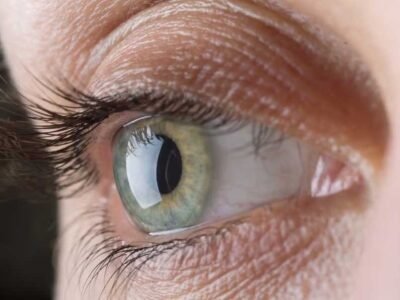
Why Joint Pain Doesn’t Always Mean Ageing
It usually starts subtly. A twinge in the knee after a long day. A tightness in the shoulders after working at a desk. Many people immediately assume these aches mean they are simply getting older. But joint pain tells a more complex story—one that isn’t always about age at all.
In truth, joint discomfort can surface at any stage of life. It often signals something deeper than wear and tear. Modern lifestyles, long hours of sitting, changes in diet, and even emotional stress have all blurred the lines between “ageing pain” and other causes.
Understanding why joints ache helps people get the right care sooner. For those in bustling cities where life rarely slows down, like patients visiting an orthopaedic clinic in Singapore, this understanding can make the difference between temporary relief and lasting recovery.
Lifestyle Strain and Everyday Habits
Daily habits can quietly take a toll on the body. Many people sit for most of their waking hours—whether at a desk, in the car, or on the sofa. Joints that are rarely moved lose flexibility and lubrication, leading to stiffness that mimics arthritis. At first, the discomfort seems age-related, but in reality, it is habit-driven.
Posture Matters More Than You Think
Poor posture plays a bigger role than most realise. Slumping while working on a laptop or hunching over a phone shifts pressure to areas not meant to bear weight. The shoulders, neck, and lower back often bear the brunt. Over time, muscles become imbalanced and joints respond with pain or swelling.
Even simple changes—like adjusting chair height, using a lumbar support, or taking short breaks every hour—can reduce unnecessary pressure on joints. These are small fixes but powerful ones.
The Impact of Overuse and Repetition
Another overlooked factor is overuse. Unlike acute injuries, repetitive strain creeps up slowly. Runners, athletes, and even avid gardeners sometimes push their limits without realizing how repetitive motion stresses specific joints. The knees, wrists, and ankles, being central to daily movement, are especially vulnerable.
What starts as a dull ache can evolve into inflammation or tendinitis if ignored. The key lies in balance: knowing when to push forward and when to rest. Muscles and joints both thrive on movement, but they also need time to heal.
When Stress Targets the Body
While emotional pressure seems unrelated to joint health, the body doesn’t separate mind and matter. Stress causes muscles to tense up, reducing circulation and flexibility. Some people unknowingly tighten their shoulders or clench their jaws during stressful days. With time, this constant tension results in aching joints or muscle fatigue.
This aspect highlights how emotional well-being matters in physical care. Practices like deep breathing, stretching, or even short walks can calm both mind and body, restoring balance to tense areas before pain becomes chronic.
The Role of Health Conditions and Environment
Joint pain can also arise from medical conditions or environmental factors that have little to do with ageing. Modern work and lifestyle patterns expose people to risks once limited to specific professions. Today, even younger adults experience pains once thought to appear only later in life.
Autoimmune and Inflammatory Conditions
Not all joint pain stems from mechanical wear. Autoimmune diseases such as rheumatoid arthritis or lupus can develop early in adulthood, affecting how the immune system interacts with joint tissue. These conditions trigger inflammation, stiffness, and fatigue, often causing confusion since they mirror the signs of age-related arthritis.
Early diagnosis makes a big difference. Recognizing that persistent swelling or morning stiffness might have a deeper cause helps patients seek timely evaluation. Advances in medicine now allow for earlier interventions that can slow progression and preserve mobility.
The Influence of Nutrition and Environment
Modern eating habits and environmental factors have also transformed the landscape of joint health. Diets low in essential nutrients or high in processed foods can promote inflammation throughout the body. Similarly, lack of exposure to natural sunlight leads to vitamin D deficiency, weakening bones and joints.
Even humidity and air quality play subtle roles. People who live or work in spaces with constant air conditioning sometimes experience joint stiffness due to lower circulation and muscular constriction. Simple lifestyle adjustments—like staying hydrated, maintaining a balanced diet, and spending more time outdoors—can greatly improve joint comfort.
Movement, Mindset, and Maintenance
The good news is joint health isn’t a one-way path downhill. Awareness, small routine changes, and consistent self-care can reverse much of the discomfort people often attribute to ageing. Pain is not always a sign of getting older; it is often the body’s way of seeking attention.
Incorporating regular, moderate movement—such as walking, swimming, or gentle yoga—keeps joints nourished and mobile. Proper sleep, hydration, and balanced nutrition complete the foundation for healthier joints. When discomfort persists, consulting professionals at specialized clinics ensures accurate diagnosis and practical solutions rather than quick fixes.
A trusted orthopaedic clinic, for instance, might offer a mix of medical evaluation, physiotherapy, and lifestyle advice. Combined, these tailored approaches remind patients that their joints can still move freely with care and patience.
In the end, joint pain isn’t always a sign that years are catching up. It is often a messenger asking for attention. Listening early, making mindful changes, and seeking proper guidance can restore comfort and confidence in how the body moves, no matter the number of candles on the cake.






